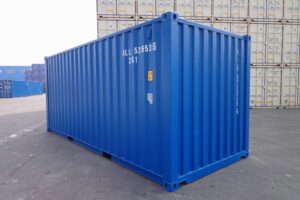Bursting strength test machines are extremely valuable in the packaging world to measure the sturdiness and dependability of materials such as paper, textiles, plastic, paperboard, and corrugated boards. To properly run a bursting strength assessment, these devices must have numerous essential elements that need to work in unison. Let’s now investigate each of these components further.
Test Chamber
The test chamber is a fundamental part of a bursting strength tester machine. It supplies an enclosed area for the specimen to be tested and guarantees consistent, controlled conditions are achieved. It is integral for guaranteeing that the sample is held firmly in place, subjected to uniform pressure, and allows for efficient observation during the testing procedure. Knowing how it works and its capacity is vital to delivering reliable and dependable bursting strength tests in the packaging industry. It generally consists of long-lasting materials such as stainless steel or aluminum, which provide endurance and protection from deterioration.
Clamping System
The clamping system plays an integral part in a bursting strength tester machine. It is designed to secure the specimen during the burst test, using clamps or plates that guarantee it stays in a fixed position and does not move. It is necessary for providing stability and uniformity during the test and ensuring that the specimen stays in place, as it is essential to obtaining accurate and reliable results. Familiarizing oneself with how the clamping system functions correctly is pertinent to getting dependable bursting strength measurements in the packaging industry.
Hydraulic System
The hydraulic system is an integral part of a bursting strength tester machine, providing the pressure necessary for the test. Depending on the design, it consists of a manually operated or electric motor-powered pump. Without it, consistent testing conditions and adequate measurement of bursting strength in various materials would be impossible to achieve. Consequently, understanding its functionality and maintenance necessities is essential for the optimal functioning of the machine.
Pressure Control
Accurate and consistent testing is achieved by precise pressure control on a bursting strength tester machine. Such machines allow the operator to set their desired pressure level through either a knob, digital input, or touchscreen interface on the control panel. This value is then maintained through a hydraulic system including components such as a pressure regulator or flow valve. More advanced systems are equipped with closed-loop control which constantly assesses and adjusts for any deviation from the setpoint. To accurately test sensitive materials, some machines also offer a gradual ramp-up feature which slowly increases the pressure used in testing.
Pressure Measurement
A pressure sensor is an important part of a bursting strength tester machine. It can be fitted with different types of technology such as strain gauges, piezoelectric elements, or capacitive sensors to convert the applied pressure into an electric signal. To ensure accurate and precise results, the pressure sensor must have high accuracy and resolution. The control panel usually has a display that shows the real-time pressure reading, so operators can check that it stays within the required range throughout the test. Regular calibration of the sensor is essential to guarantee its readings are traceable and reliable. The manufacturer’s guidelines for calibration intervals and procedures should be followed for the best results.
Control Panel
The control panel of a bursting strength tester machine constitutes an essential link between its operator and its potential. It may be composed of buttons, switches, knobs, touchscreens, or a combination thereof and is usually designed for straightforward use and navigation. This enables users to set the required parameters for tests, observe their progression, as well as access different functions and controls. In other words, it plays a fundamental role in operating and controlling the bursting strength tester machine accurately and efficiently. For this reason, understanding the layout and functionalities of the control panel is essential.
Safety Measures
Bursting strength tester machines feature a wide range of safety measures to safeguard personnel and prevent any potential incidents. These include emergency stop buttons, safety interlocks, and protective covers.
Software and Data Logging
Advanced models of bursting strength tester machines are equipped with software and data logging capabilities that enable the operator to store, analyze, and report on test data and monitor testing history.
Accessories and Attachments
Depending on the particular needs of a test, bursting strength testers may come with additional features and accessories. These may include sample cutters, preparation tools, and fixtures to be able to experiment with different sizes and shapes of specimens.
It is important to have an understanding of the components of a bursting strength tester machine, in order to operate it efficiently and interpret test results precisely. All the elements are fundamental in performing reliable bursting strength tests and confirming the excellence and effectiveness of packaging materials.







